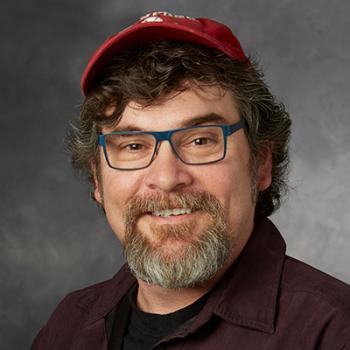Current Research and Scholarly Interests
The auditory system is a remarkable feat of engineering capable of detecting motion at the atomic level and transmitting this information to the brain with precise timing and fidelity. We use advanced electrophysiologic, imaging, molecular and pharmacologic techniques to probe mechanisms of mechanotransduction and synaptic transmission at the auditory periphery. There are several independent lines of research in the laboratory.
Mechanotransduction, the conversion of mechanical stimulation into an electrical signal, is complex and involves a variety of proteins, many of which have not yet been identified. A major goal of the laboratory is to delineate the functional relevance of mechanotransduction and to identify proteins and their function in this process. To date, we have identified and characterized the tuning properties of the sensory hair bundle and mechanotransducer channels, identifying at least two new physiologically relevant contributions of these channels. We have performed the only single channel study of mechanotransducer channels, demonstrating tonotopic variations in the intrinsic channel properties. We have also performed the only kinetic analysis of activation, again demonstrating tonotopic variations in the kinetics of the mechanotransduction channel. In addition, we have pharmacologically characterized and biophysically mapped the transducer channel pore. Recently we have developed a high speed confocal imaging system that will allow us to optically monitor calcium changes associated with mechanotransduction, allowing us to localize the site of mechanotransduction and directly investigate mechanisms of calcium, regulation.
A second major direction of the laboratory is synaptic transmission where we are interested in identifying mechanisms associated with specializing these synapses to graded and tonic release of transmitter at high rates and with high fidelity. We have morphologically and biophysically characterized these synapses, quantifying release properties at different frequency locations. We are one of only a handful of laboratories who have recorded directly from synaptic terminals where we are investigating mechanisms of multivesicular release. Recently we have developed a technique for measuring vesicular fusion during stimulation so that true release parameters can be investigated. We plan to further develop this technique to be used while measuring membrane potential changes.
A third area of interest for our laboratory is the development of the peripheral system. We are particularly interested in identifying mechanisms associated with the establishment of the tonotopic organization of the cochlea. In addition, indentifying factors that control cell differentiation and specialization, those intrinsic and those extrinsic to the cells is a key priority. This work is critical when trying to repair or replace hair cells either via regenerative or stem cell type therapies.
Although fundamentally a basic science laboratory we have strong ties to translational research both directly and through collaborative efforts. Each of our three major research areas have translationally oriented projects associated with them. In addition, we are developing a project to create a nontoxic aminoglycoside based on biophysical data collected while investigating mechanotransduction.
The auditory sensory cell, the hair cell, detects mechanical stimulation at the atomic level and conveys information regarding frequency and intensity to the brain with high fidelity. Our interests are in identifying specializations associated with mechanotransduction and synaptic transmission leading to the amazing sensitivities of the auditory system. We are also interested in the developmental process, particularly in how development gives insight into repair and regenerative mechanisms.


